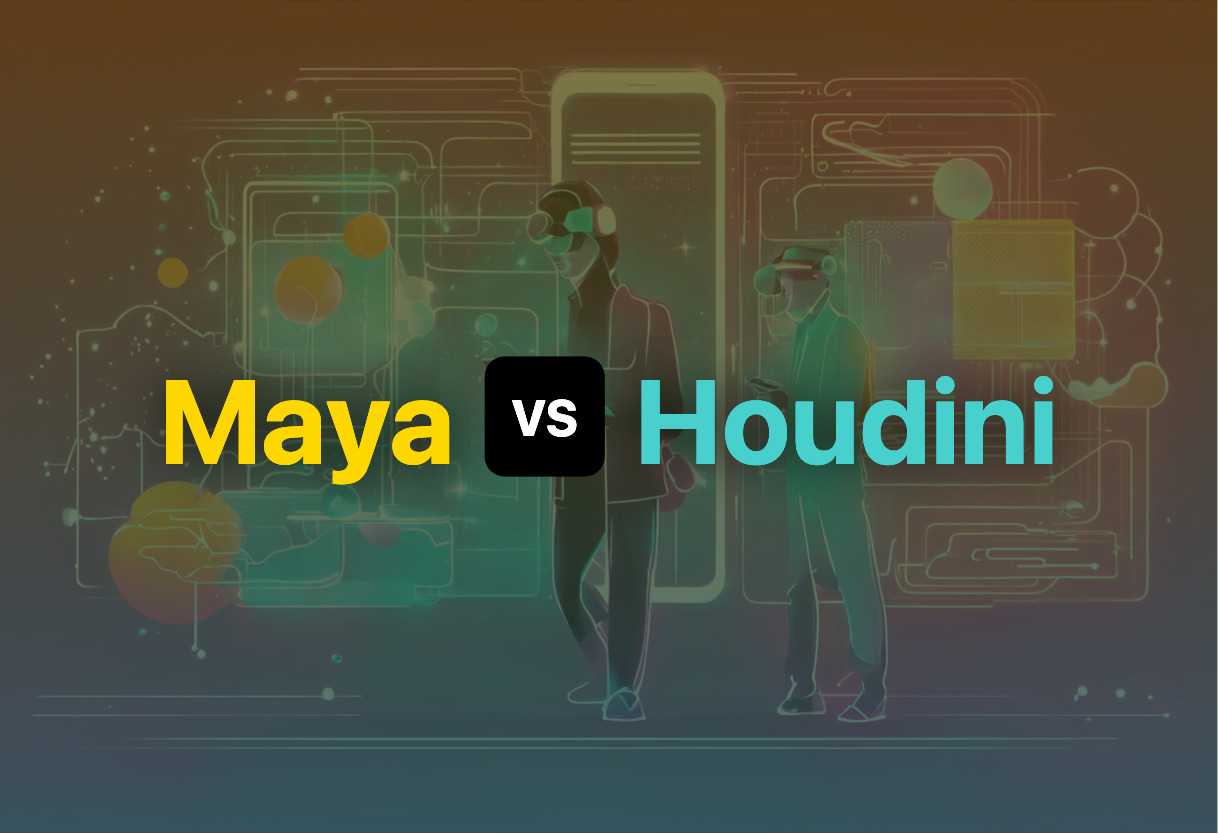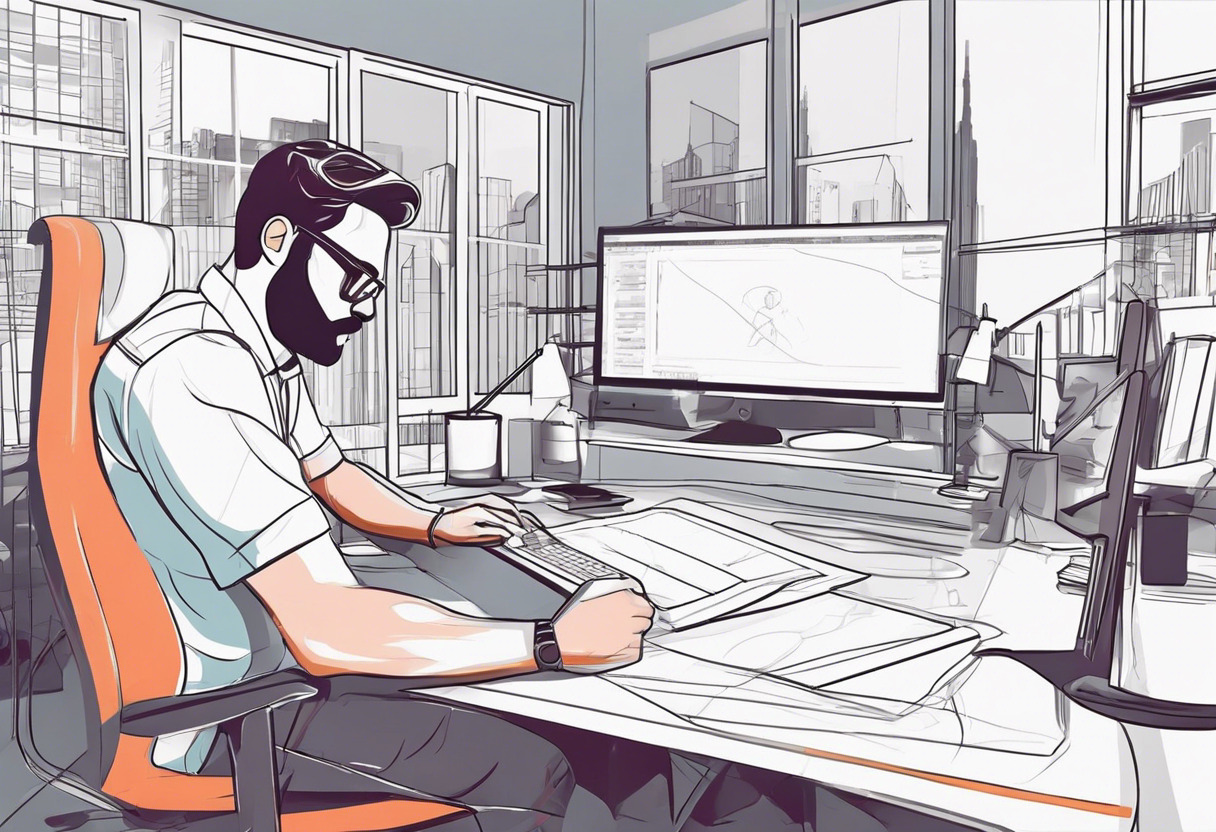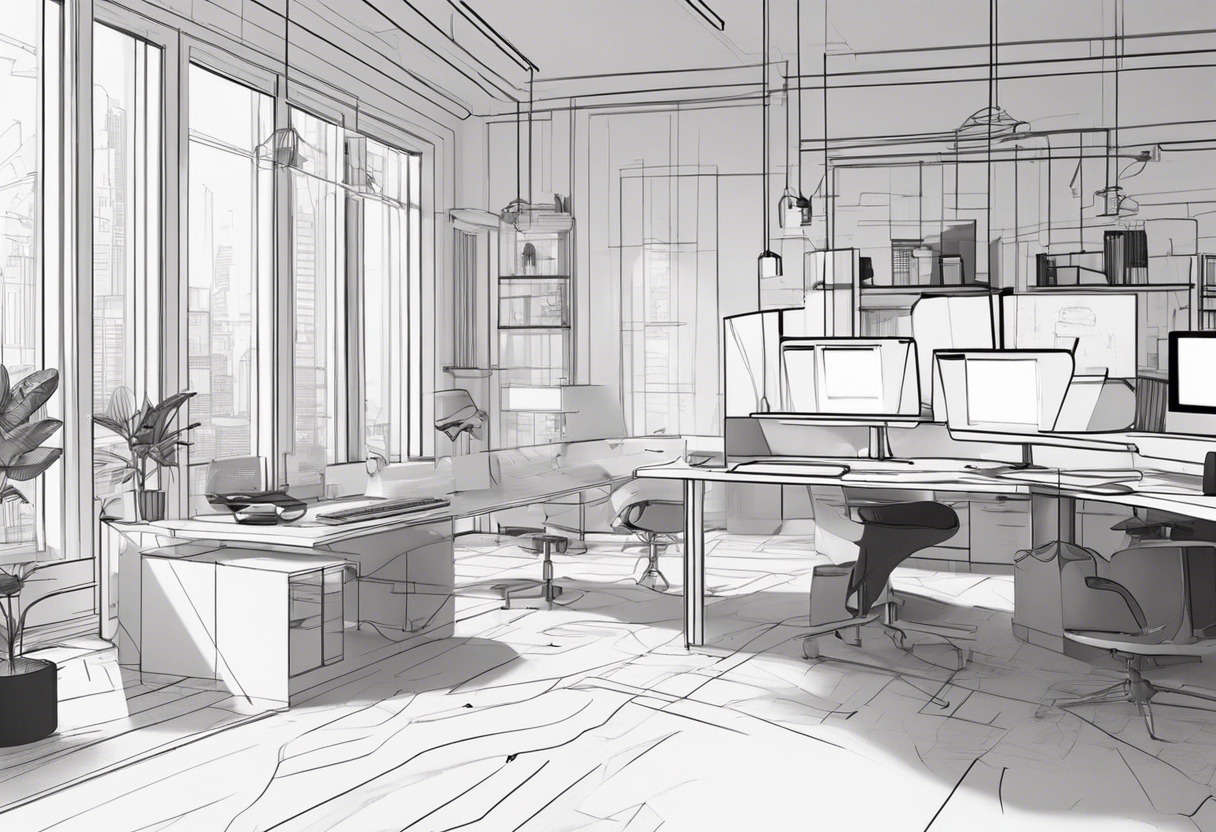For robust flexibility and detailed modeling, the industry-staple, Maya is king. However, if highly-customizable, procedural workflows for spectral simulations are on your docket, then Houdini reigns supreme. Simplicity or complexity, your proficiency level and task scope should decide.

Key Differences Between Maya and Houdini
- User-Friendliness: Maya offers a simpler and more traditional approach, while Houdini’s node-based, procedural workflow favors a steep learning curve.
- Scripting Language: Maya employs MEL, while Houdini utilizes Python, a widely-used language in the industry.
- Performance: While both render impressively, Houdini’s procedural nature outclasses Maya in complex, dynamic simulations.
- Pricing: Maya and Houdini offer free versions, but Houdini’s full commercial license is pricier than Maya’s.
| Comparison | Maya | Houdini |
|---|---|---|
| Developer | Autodesk | SideFX |
| Primarily Used For | Creating assets for interactive 3D applications, animated films, visual effects | Complex reflections, animations, particle systems, modeling, rigging, lighting |
| Major Users | Accenture, Dell, EYGBS India, Vavia Technologies | Walt Disney Animation Studios, Pixar, DreamWorks Animation |
| Scripting Language | Maya Embedded Language (MEL) | Python |
| Known For | NURBS modeling, powerful animation capability, comprehensive functionality | Unique node-based procedural workflow, advanced dynamic simulation tools |
| Pricing Structure | Monthly/Yearly subscriptions, Free trial, Educational license | Free version to $4,495 for a perpetual license |
| Industries | Film and Television | Film, TV, Video Games, Virtual Reality |
| Platform Support | Windows, macOS, Linux | Windows, macOS, Linux |
What Is Autodesk Maya and Who’s It For?
Autodesk Maya, colloquially known as Maya, is a 3D computer graphics application proficient in creating assets for interactive 3D applications, animated films, TV series, and visual effects. Developed originally by Alias and now owned and operated by Autodesk, this software graces Windows, macOS, and Linux users with its presence. Its highly customizable user interface, a boon from a Disney request, has popularized it in the animation industry. A known name among top company users – Accenture, Dell, EYGBS India, and Vavia Technologies, the software proves versatile and high-performing.
Maya is for anyone reaching for detailed, complex shapes via the software’s NURBS modeling system, and those seeking a powerful platform for animation, allowing movement, deformations, and effects. Professionals in the visual arts, interactive 3D applications, and associated industries generally prefer Maya due to its comprehensive functionality and range of subscription pricing including a free trial. You come across this software in the making of popular movies such as The Lord of The Rings series, Spider-Man, Ice Age, and Star Wars series.

Pros of Autodesk Maya
- Comprehensive functionality including 2D drawing, 3D modeling, data import/export and more
- Highly customizable user interface
- NURBS modeling system ideal for creating complex, detailed shapes
- Known for powerful animation capability
Cons of Autodesk Maya
- Potentially high cost for businesses earning more than $100,000
- Steep learning curve especially for beginners
- Performance can be compromised in low-spec hardware
What Is Houdini and Who’s It For?
Houdini, a product of SideFX, is a 3D animation and special effects application. This Toronto-based firm has been serving users with its visual effects (VFX) softwares for over 25 years. Houdini enjoys usage in the spheres of film, TV, video games, and virtual reality. Architects of Disney’s Fantasia 2000, Frozen, Zootopia, and Raya and the Last Dragon, as well as other notable animation productions, have harnessed Houdini’s tools.
It’s an ideal application for artists working in the VFX industry seeking a technical edge, game developers striving for more immersive worlds, or students looking to experiment with personal non-commercial projects using the free Houdini Apprentice version. It offers a variety of packages catered for individuals and studios, ensuring its utility is accessed by a wide array of creatives.

Pros of Houdini
- Unique node-based procedural workflow for refining work
- Wide range of tools for 3D production
- Advanced dynamic simulation tools for highly realistic visual effects
- Contains a free version for students and hobbyists (Houdini Apprentice)
Cons of Houdini
- Requires a heavy-duty hardware setup
- Has a relatively high learning curve
- Cost of perpetual license can be high
Maya vs Houdini: Pricing
Maya offers pricing through monthly, yearly subscriptions, a free trial, and an educational license. Houdini ranges from a free version (Houdini Apprentice) to $4,495 for a perpetual license (Houdini FX).
Maya
Maya adopts a flexible approach to pricing, offering users a choice between monthly and yearly subscriptions. A free trial is available to users keen on trying the platform before committing, and for students and educators, an educational license is offered. For small businesses earning <$100k, a lower fee is applied.
Houdini
Houdini, on the other hand, presents an array of options from a free version (Houdini Apprentice) for students and hobbyists, to a high-end perpetual license (Houdini FX) priced at $4,495. Packages catering to different users, including individuals and studios, provide flexibility, whether for annual use or a perpetual license.
Code Examples for Maya & Houdini
Maya
Given is a Python code snippet to create a 3D animation of a bouncing ball. The code uses basic trigonometric equations to accomplish this. A prerequisite would be to have Python or Maya’s Python Script Editor set up.
import maya.cmds as cmds
# Create a sphere
ball = cmds.polySphere(name='ball')[0]
# Set the animation length
cmds.playbackOptions(min='0', max='100')
# Animate the ball in a bounce pattern
for i in range(101):
y = abs(10 * cmds.sin(i))
cmds.setKeyframe(ball, v=(0, y, 0), at='translate', t=i)Houdini
This code snippet, written in VEX, creates a spiraling curve in Houdini. Before running the code, ensure Houdini’s built-in compiler for VEX language is set up.
int points[];
// Create a spiral curve
for(int i=0; i<100; i++)
{
vector pos = set(cos(i*0.1)*i, 0, sin(i*0.1)*i);
int pt = addpoint(0, pos);
append(points, pt);
}
// Create a polyline using the points
addprim(0, "polyline", points);Such creative animation snippets make learning exciting and generate curiosity about different aspects of Maya and Houdini software.
The Final Tally: Maya vs Houdini
Working towards a decisive verdict between Maya and Houdini, let us scrutinize with relation to distinct audience segments.
3D Modelers & Design Enthusiasts
For creators delighting in complex, detailed shapes, Maya takes precedence. Praises ring for Maya’s commanding NURBS modeling system and superior texturing, pushing 3D design to its limits.
Special Effects Aficionados
If you’re enamored by vivid visual effects, lean towards Houdini. Its advanced tools for realistic dynamic simulations and particle effects are worth the trade-off.
Game Developers
Houdini piques interest in game development, optimizing simulation, terrain generation and destruction effects for an immersive gaming experience. However, Maya’s seamless compatibility with game engines like Unreal and Unity shouldn’t be dismissed.
Animation Industry
In the animation cosmos, it’s a tough pick. Both softwares are equally lauded. Maya shines with superior animation capabilities and customizable interfaces, whereas Houdini captures attention with node-based workflow and procedurality.
Deciding between Maya and Houdini straddles multi-dimensional avenues. If finesse in modeling and animations is crucial, Maya emerges as a front-runner. Yet for mind-bending simulations and complex VFX, Houdini springs ahead. Your choice aligns with your niche.
Grant Sullivan
Content writer @ Aircada and self proclaimed board game strategist by day, AI developer by night.





